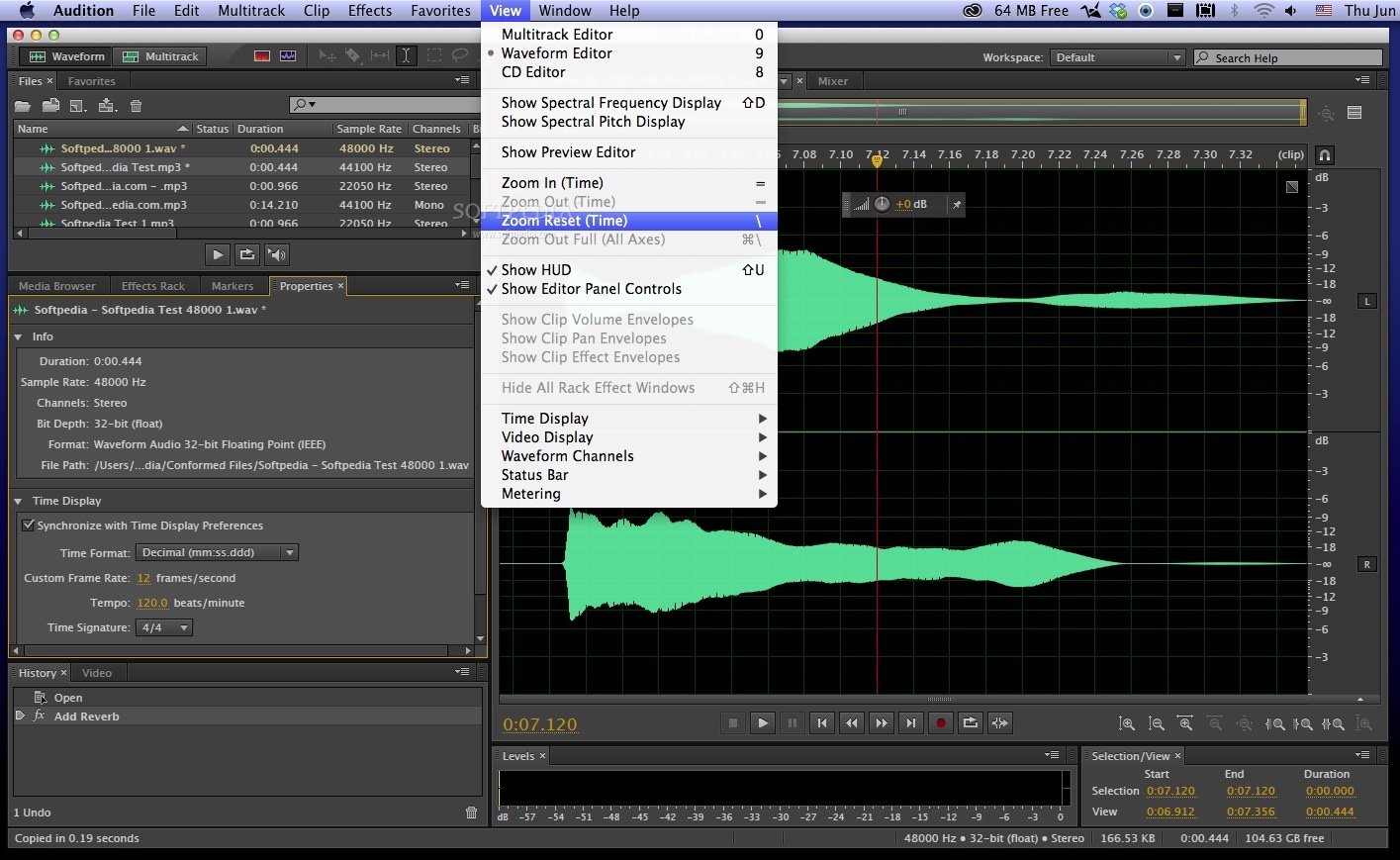

The ‘Amplitude and Compression’ option allows you to level out the overall volume by raising the lowest volume and decreasing the highest volume.ġ6.10 – Once the signal and environment are ready, you can create specific presets whose effects can be easily applied to later templates for convenience.ġ6.50 – More Tools and Track Controls: Within the Adobe Audition controls, there are some representative symbols: R (Record), S (Solo – for playing just one specific track) and M (Mute).ġ8.45 – As a lot of the editing you’ll be doing is ‘destructive’ – it’s actually changing the file – you might want to make a copy of each file and keep them in a separate folder of originals, just in case.Ģ0.30 – Skype is both a help and a hindrance: the sound isn’t great, but it does a lot of the compression work for you.Ģ1.50 – Positioning Audio: A useful keyboard shortcut is just hitting the Home button, which will take your cursor back to the start of the project. You can use visual as well as audio cues to get it just right.ġ4.00 – Adobe Audition has a number of great plug-ins and effects.
ADOBE AUDITION FOR PODCASTS MAC
Useful tips: rename your tracks to avoid confusion if you’re working with a lot, and always double-check your audio.ħ.40 – Corey describes different ways to zoom in or out to increase or decrease the visibility of your tracks (useful for Windows and Mac users).Ĩ.40 – Ordering and laying out tracks when you have a Host and a Guest so that it flows like a conversation.ĩ.25 – Being familiar with the host’s recording systems and preferences is important because you might need to alter the structure of your tracks.ġ0.32 – Enhancing Audio: It’s rare to find good quality, raw audio, so you’ll need to clean it up through equalizations, compression and noise reduction.ġ1.20 – Audition presents the audio in two formats: a linear waveform and a spectral analysis.ġ1.50 – Recording a section of audio before speaking allows audio engineers to see the levels of background noise your microphone is picking up.ġ3.05 – Increasing the volume in Adobe Audition is easy – simply use the relevant Amplitude Adjustment. Dragging in some of the tracks you intend to work with gives you an idea of how the project will look. Spoken-word podcasts function well at 44100Hz, 32 Bits and the Master mode set to: Stereo. via Skype through a recording program such as Pamela or eCamm.ĥ.37 – Setting up a Workspace: The Adobe Audition presets are great so only adjust them if you want to. You also need to ascertain if there is a host and one (or more) guests, and how the interview has been conducted, ie. Once the session opens up, select the appropriate microphone settings.Ĥ.50 – Project Files: Intros, outros, teasers and any bumper music are vital recordings to have. Sample rates will be discussed in a later tutorial so leave settings as default. Windows users: File > Preferences > Audio HardwareĢ.55 – The best way for practicing recording audio is in a New Multi-Track Session.

Mac users: Audition > Preferences > Audio Hardware More advanced teaching about buffer rates etc. Check that the default settings match the devices you’re using. What’s more is you can pick the subscription model that suits you.ġ.25 – Getting Started: using recorded audio to assemble a podcast in Adobe Audition (Mac and Windows compatible)ġ.45 – Recommended equipment and hardware by Corey Coates and Podfly is the Focusrite Scarlett 2I2 USB interface, used with a condenser microphone.Ģ.05 – Be sure to check your sound preferences in Audition so that the program registers the correct devices. 0.25 – Adobe Audition is one of many DAWs, or Digital Audio Workstations which is gaining popularity among those in the audio production industry.Ġ.35 – Adobe is introducing the Creative Cloud get the latest editions of the programs you need for a flat-rate monthly fee.


 0 kommentar(er)
0 kommentar(er)
